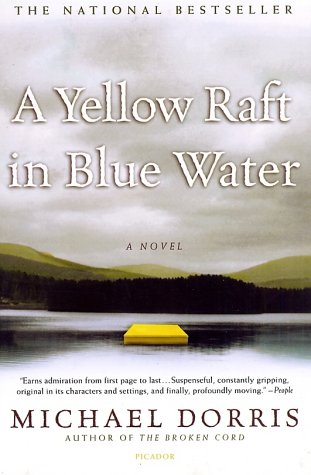In my personal quest for identity, I have tried (but usually failed) to recognize the teensy tiny bit of me that isn't the spitting image of Whitey McGee. But there is a drop of non white blood in me. This doesn't seem to matter though, since I am arguably the most Germanic-looking person in the whole wide world and people literally laugh at me when I tell them otherwise. But I'm telling you, guys, I know it for a fact. It is part of my freaking birth story that I am one thirty-second Cherokee. At the very least, my great great great great biological sperm or egg donor was a full-blooded American Indian.
But that doesn't matter. I don't have much right to claim that heritage.
But let me move this conversation out of the personal and back into the political (if that is indeed possible). Without a doubt, Native cultures are problematically presented in all forms of media. It just so happens that I ran into this blog whose author is more equipped to discuss all the various ways in which this happens--especially in the realm of children's literature. Some pervasive examples of the problematic way in which Native Peoples are portrayed include dressing up "like an Indian" for Halloween and the recent fetishization of all things branded "Navajo," especially at Urban Outfitters. Also, take for example the National Museum of the American Indian in Washington DC. Admittedly, I haven't been there in several years, but damn, that place--even when it was still brand new--was terribly unorganized. I felt that it didn't try to distinguish tribe from tribe or culture from culture. It just lumped all Indians into one giant category. Very frustrating.
I've read a lot of books about American Indians for a history class a couple years back. There was no textbook--because let's be real about what kind of historical information usually exists within textbooks; rather, we read a slew of historical fiction including Waterlily, On the Rez, A Yellow Raft in Blue Water: A Novel, Stone Song: A Novel of the Life of Crazy Horse, and Choteau Creek: A Sioux Reminiscence. We read these books chronologically in terms of when the action was taking place in the novel, which was very interesting. Also important to note is the fact that the great majority of these books were about Lakota people, including the Oglala. Here's your prescription for a better life: read these, stop celebrating Columbus day, and call me in the morning.
But those are adult books.
The blog I linked to earlier--American Indians in Children's Literature--is concerned, like me, mostly with books for children. But on her site I couldn't find any anything about Tomie dePaola's picture book The Legend of the Bluebonnet. So I guess I'll talk about it a little bit here. This is an important book to look at because, in addition to Native American History Month, it is also Picture Book Month!
I (and we've established here that this "I" is about ninety-seven percent white) like this book. I think it's a good retelling. The book does not claim to be written and illustrated by Tomie dePaola. Instead, it is "retold and illustrated" by its author. I'm a big fan of the Author's Note, in which dePaola says
When doing a book based on a legend involving real people, it becomes a drive to find out as much as possible about their customs and way of life in an effort to portray as accurate and full a picture as possible.How anthropological! And I think Tomie really did his research. He specifically notes that the people in the story are Comanche; they aren't generic "Indians." And, he seems to know that Comanche live in tee-pees and wear their hair long and in two braids (two facts that Google supported more than thrice). I think a really great paper could be written about the illustrations in this book and how they represent, or misrepresent, the culture at hand. Or a paper that decoded the different variants of the legend would also be fun to read. OR A BLOG. Any takers?
The only weirdness that I can find in the text has to do with the stake that appears on the front cover of the book and one other time within the text. It has a shield or maybe a dream-catcher of sorts on it with a moon and stars. I'm not really sure what to make of this since I can't find anything about it in my (albeit very limited) research about the Comanche.
The book also has some very interesting messages and interpretations concerning childhood. Without giving too very much away--the protagonist in the book makes a big sacrifice and saves her people. This maybe is a little bit like our culture's idea about children as the only hope for the future, etc. dePaola even mentions in the Author's Note that he believes the story to be
a tale of the courage and sacrifice of a young person. [The protagonists's action] represents the decisive sort of action that many young people are capable of, the kind of selfless action that creates miracles.So we can see a little bit here that dePaola has his own ideas about children, and that they generally reflect our culture-at-large's idea about children.
Anyway, another book you and I ought to read this month: The Legend of the Indian Paintbrush. I just requested it from the library, so maybe you'll get to hear about it soon.
And for class Monday I have to read The Absolutely True Diary of a Part-Time Indian. Maybe I'll tell ya'll about that next time, too.








great post!
ReplyDeletehttp://www.amazon.com/exec/obidos/ASIN/0803716346/amerindianarts
ReplyDeleteI remember liking that book from elementary or middle school, though the narrative details are fuzzy. Amazon tells me that the Kiowa and Commanche are referenced by name.